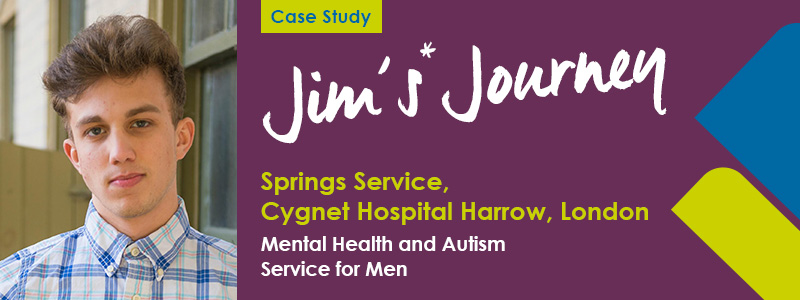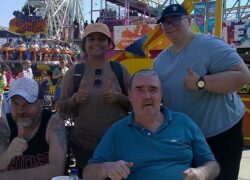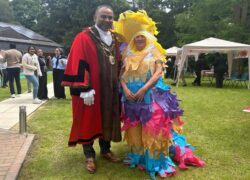
Jim’s* history:
Jim is a 19-year-old man with a diagnosis of autism, mild learning disabilities, and hyperkinetic conduct disorder. He has a background history of illicit drug use and involvement with gangs.
Jim struggled in the past following his parents’ separation and his father moving out of the family home. He found this hard to understand and process emotionally as predisposed by his diagnosis of Autism This led to him displaying challenging behaviour as a way to communicate his needs and frustrations.
In the community, Jim was heavily involved in illegal activity, which led to him being prosecuted and detained at a Secure Training Centre (STC).
When Jim came to us:
Initially, Jim’s admission to the Springs Service at Cygnet Hospital Harrow was seen as negative to him. He felt like he did not have a mental health condition and was unfairly detained against his will. He subsequently went through a short period of aggressive outbursts that led to seclusion and being placed on one-to-one enhanced observations.
Jim’s care:
After a couple of months within the Springs Service, Jim was able to build trusting relationships with his peers and professionals. He also started to enjoy spending time positively in communal areas.
He engaged well in treatment interventions, such as Psychology, and was able to be open and transparent about his thoughts and beliefs. He came to understand that he could be vulnerable, which is what led him previously being recruited to join a gang and being peer-pressured to engage in criminal activity.
Due to Jim engaging in psycho-education around gangs using an adapted Cognitive Behavioural Therapy (CBT) approach, he came to gain insight into the dangers and consequences of being in a gang.
From this intervention, he came to understand there was a clear distinction between his positive and negative peer groups. The positive peer group would provide good guidance to motivate him to not engage in criminal activities and violence.
Jim also enjoyed occupying his time with other activities such as music, cooking, and watching TV programmes, in the social spaces.
Jim continued to progress through his care pathway, engaging enthusiastically with therapies. This helped Jim to understand his emotions, cope in high-stress situations, learn effective communication and assertiveness skills.
Staff worked with Jim to develop a community transition plan, which focused on safety planning, medication management and life skills.
Jim today:
Upon completion of his rehabilitation programme, Jim was discharged back into the community to live with his mother.
Equipped with his coping mechanisms and a renewed sense of purpose, he approached his reintegration with optimism and determination. He now engages in community support groups, continues his therapy sessions, and utilises the resources available to him.
*Name has been changed to protect his identity




